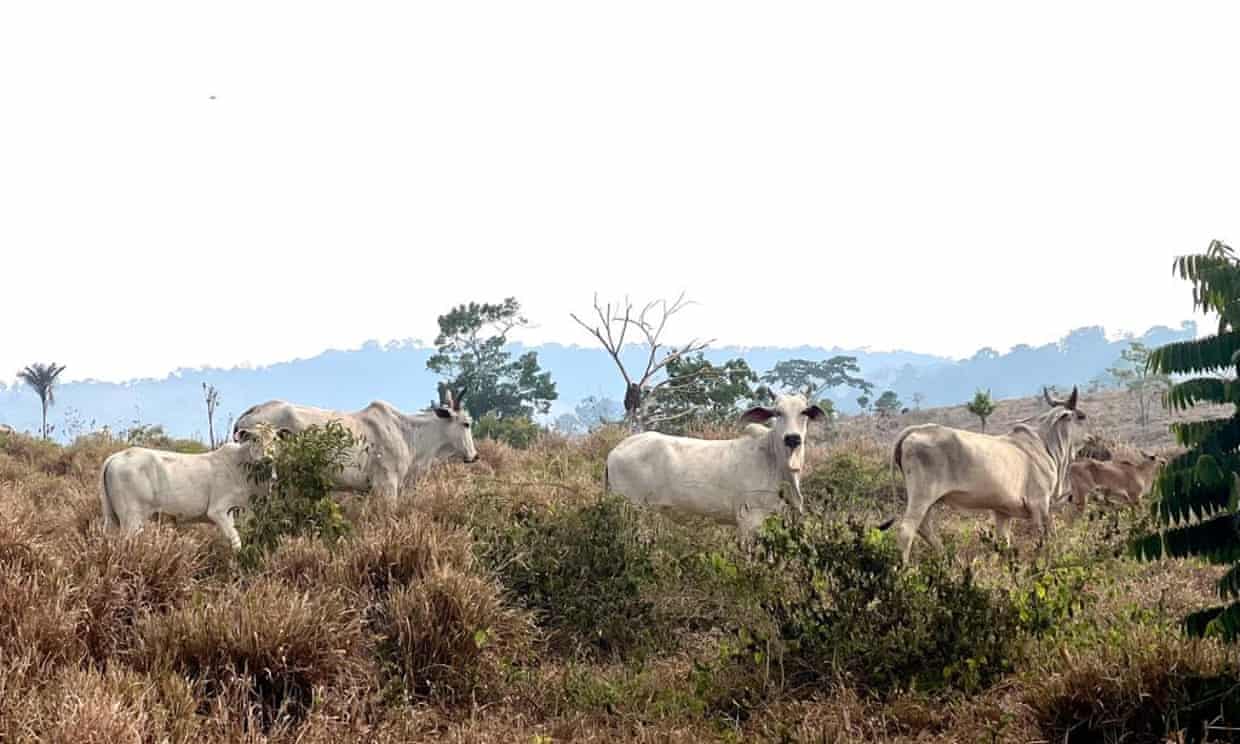
October, November and December are usually a period of transition. By now, the dry season would normally have peaked, and rivers and aquifers would start to replenish. But the rains refuse to come. And with every day that passes, the sense of foreboding grows stronger.
Many rivers in the region, including the mighty Rio Negro, he said, have fallen to levels not seen since measurements began more than a century ago.
Temperatures in many areas have hit record highs and the drought is far from over.
At a recent crisis meeting organised by the National Water and Sanitation Agency and president Luis Inácio Lula da Silva’s chief of staff, experts warned of threats to hydroelectric dams and river transport of essential commodities, such as food, fuel and medicine. Meteorologists explained that this year’s Amazon drought is anomalously severe due to the El Niño effect, Atlantic Ocean heating and the climate crisis.
This explanation is accurate but narrow, missing many of the main causes of this problem and the most workable solutions. The most important of those, proved by recent studies, is that a healthy forest does not only generate its own rainfall, but also acts as a powerful regional cooler. If you clear the vegetation, as many farmers continue to do – albeit at a much slower rate than they did under the rule of the rightwing former president Jair Bolsonaro – then the region will become hotter and drier due to local effects and global climate disruption.
The beef industry is the biggest driver of Amazon deforestation. Nothing else comes close. Land-grabbers use cows as occupying armies to strengthen their claims on stolen and cleared forest. This has become one of the world’s most heinous climate crimes. A mind-boggling new report by the Climate Observatory notes that Brazil’s beef industry now has a bigger carbon footprint than Japan. Dwell on that for a moment. This country has 220 million cows, 43% of which are in the Amazon. Their global heating emissions – from their burps and farts, but mostly through their owners’ connections to forest clearance and fires – are now greater than all the cars, factories, air conditioners, electric gadgets and other forms of carbon consumption of 125 million Japanese people living in one of the most industrialised economies on Earth. When slaughtered, the cattle make billions of dollars for global food conglomerates. Through cows, these companies intensify the climate crisis and, thus, probably help to make El Niños more likely.
Carlos Nobre, one of Brazil’s most influential climatologists, confirmed that cattle farm deforestation is contributing – along with the primary causes of El Niño and Atlantic warming – to this year’s devastating dry season. The danger, he warned, is that such extreme climate events will, within two decades, push the Amazon to a critical point, after which the region will desiccate and be unable to maintain itself as a tropical rainforest. In the southern part of the south-eastern Amazon, he said, the forest is very close to that point of no return. The dry season there is four to five weeks longer than it was in 1979, tree mortality is rising and the forest emits more carbon than it absorbs.